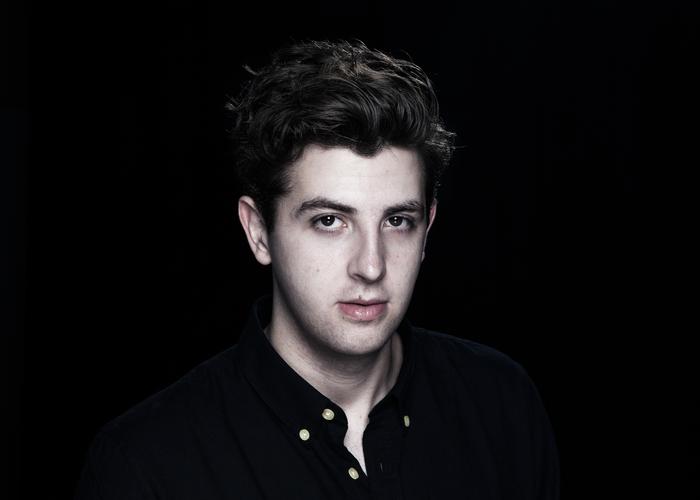Towards the end of his last tour of North and South America with The xx, the pop trio’s sonic and rhythmic heartbeat Jamie was pinged a YouTube clip from a friend in London. He was suffering a bout of homesickness. Intermittently, it can get to him. So when he eventually got round to clicking on Mark Leckey’s Fiorucci Made Me Hardcore, it was as if a hand was wrapping around his shoulder, reminding him of everything he holds dear and romantic about the margins of the national dancefloor that interest him most, back home. “I became obsessed with it,” he says.
Leckey’s 14.45m video montage from 1999 cuts directly at the intersection between the flippancy and seriousness, the beauty and lunacy of British dance music culture, its timeline travelling from the working class theatrics of Northern Soul through the wide-eyed euphoria of acid house. There is an intermittent stopover to peer at depressed parochial 80’s shopping centr...
Show the rest
Towards the end of his last tour of North and South America with The xx, the pop trio’s sonic and rhythmic heartbeat Jamie was pinged a YouTube clip from a friend in London. He was suffering a bout of homesickness. Intermittently, it can get to him. So when he eventually got round to clicking on Mark Leckey’s Fiorucci Made Me Hardcore, it was as if a hand was wrapping around his shoulder, reminding him of everything he holds dear and romantic about the margins of the national dancefloor that interest him most, back home. “I became obsessed with it,” he says.
Leckey’s 14.45m video montage from 1999 cuts directly at the intersection between the flippancy and seriousness, the beauty and lunacy of British dance music culture, its timeline travelling from the working class theatrics of Northern Soul through the wide-eyed euphoria of acid house. There is an intermittent stopover to peer at depressed parochial 80’s shopping centres, providing a perfect counterbalance for the functionality of disco in all its myriad forms through the British psyche.
The piece connected directly, magically with the material Jamie had been working on while fashioning his first solo record, In Colour. If Hardcore looks like our mirrorball past and future, wrapped into one stop-start curiosity kaleidoscope, In Colour sounds like it. Jamie’s music is blessed with the same streamlined polarity of looking back to enable moving forward. This is his major gift to the British dance music conversation.
In January this year, Jamie xx stepped aside from the mixing desk of his solitary studio bunker space in Old Street and decided that In Colour was finished. It had been three years since he had began work on the first cut that suggested he had a solo record in him, Girl. Both the title and carefully calibrated, vibrant accompanying graphic design imagery for the album are a deliberate delineation away from the chic monochromes that have marked his work with The xx. “I wouldn’t have called it In Colour if the record had sounded dark”, he notes. When he began the project, not even knowing where it would take him, he was well aware of that possibility. “That could have happened.” Yet in his time in the band, Jamie has touched if not exact extroversion, at least moments of private joy. This was the record, it seemed, to spell those out.
On deciding that work was at a natural conclusion, he hung up his headphones for a week and invited everyone that would be working on the record to listen to it. The garrulous nature of the songs surprised him. Suggestions were made for a running order. When he finally found one that made him happy, a fully realised record sprang out, that ran with something of the quietly climactic urgency of his DJ sets. It was a record that spoke in rangy textures of soul, gospel, hip-hop and every mutation of the purity of house music that has twisted its way into a new sub-genre since 1986. Yet it sounded exactly like him. “It wasn’t just a series of unconnected ideas anymore”, he says. “It was an album. It felt… positive.” This was an important blossoming moment in Jamie’s musical time frame.
In Colour mirrors the special skill-set that has turned Jamie into one of the major DJ draws at the sophisticated end of the global nightlife spectrum. Beginning with the bold, insistent rush of Gosh the record sets out its magnificent stall early. Traces of break-beat and clipped techno can he heard in his countenance of its rhythm track. “It was supposed to be the final track on the record, in my head.” It was the last to be finished. “It was much faster. Then I slowed it down by 20-30% and the beat sounded harder, grittier somehow. The massive synth line began to kick against it and I started to feel that moment of euphoria I’m always looking for when I’m making music. That is the end goal.” He says it doesn’t happen often. But when it does, he knows. Within the grand, reedy melody that builds midway through the track, Jamie seems to hit a tangent somewhere between rave’s blaring air-horns, a riff from an old, dusted-off New Romantic curiosity and the sweep and ballast of a classical string solo.
Jamie has a fastidious, perfectionist’s approach to making music. “I work and work and work until I drive myself mad trying to find something that makes sense to me.” He is his own fiercest critic. “It never sounds good enough. I was pulling my hair out trying to make all this fit together when Gosh happened and pulled it all into one place.” A suite was born.
Hide the rest















